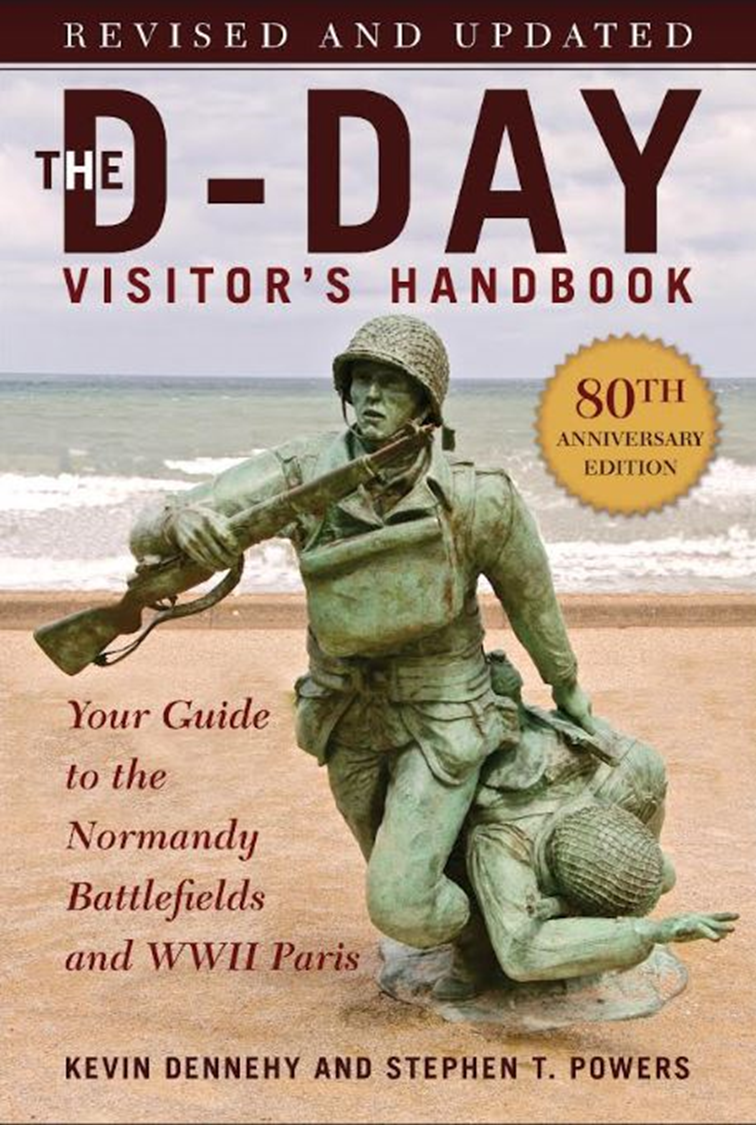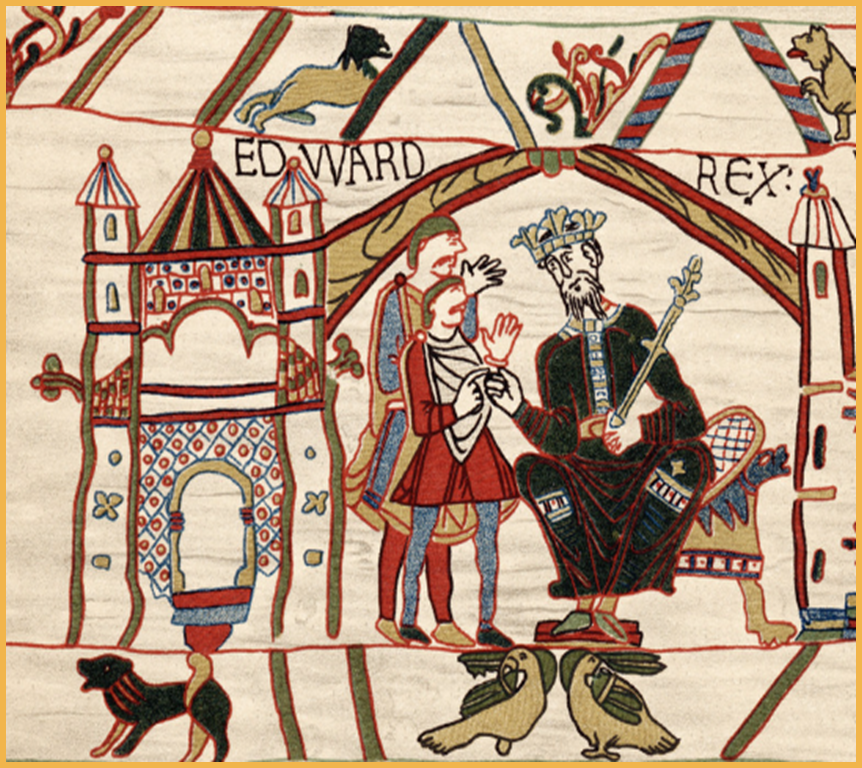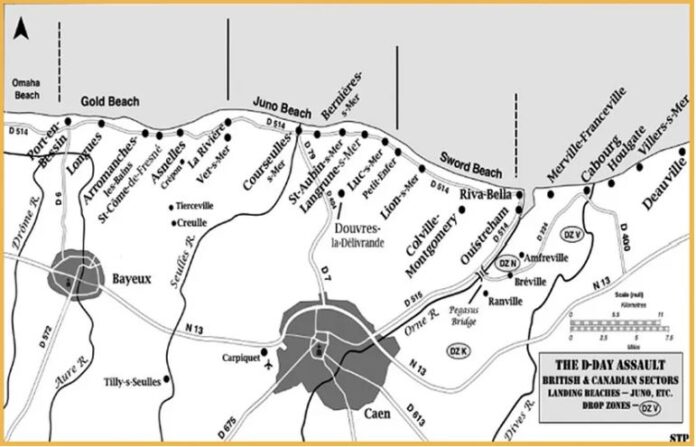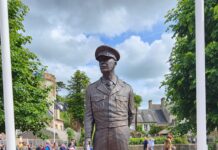More than 1 million Americans annually visit the Normandy region of France, particularly to see the June 6, 1944, landing beaches. In terms of planning, it would probably be less stressful to travel to Normandy before or after a major anniversary such as this year’s 80th anniversary of the invasion. You can find full information in my new travel guide: The D-Day Visitor’s Handbook.

For the 79th anniversary last year, there were still many World War II veterans in attendance, though their numbers are falling. In off years, hotel prices will be less expensive, roads open and restaurants, museums and monuments less crowded. If you insist on making the 80th, you may be too late as many hotels are sold out — a route to go is the many tours that are offered — however, they range from $3000 to $9000 without airfare, but include meals, transportation and lodging.
Here’s some basic travel tips: Cell phone service is better now than it was a few years ago. While Normandy is very rural, safe and the people friendly, common sense practices of travel prevail. Always lock your rental car and don’t have anything of value in plain sight. A few years ago, I found a young French lady’s purse in a German bunker with her diary in it — and thankfully an address. I mailed it to her when I returned to the U.S. and she sent me a letter saying that she left it her car with her cell phone and it was broken into.
In terms what to take…it’s Europe, it could be sunny one day and raining hard and cold the next. A good travel packing app is Pack Point, which gives you checklists of what to pack in what city in what weather. Pack accordingly. Stay on marked trails, particularly on the steep bluffs of Omaha Beach. I left the trail near a monument next to a paved trail and fell, cut my knee and ruined a shirt and pair of pants, all because I wanted to walk on a 25-foot grassy, and slippery, shortcut. The towns are very rustic and historic, cobblestoned roads are slippery, watch your step. Bring a good pair of walking shoes.
Sample Itineraries
We make suggestions if you have only a day, two days or more. In a two-day period, You can visit the American Cemetery at Colleville sur mer, Point du Hoc, Utah Beach and if time, San Mere Eglise/Carentan. Add a day, hit the Commonwealth areas of Gold Beach/Arromanches/The British Memorial/Longues Battery, Juno and Sword beaches and Pegusus Bridge, etc.

We even recommend day tours with Viator from Paris if you are there for work and only have a day to go up and back (go to our website, Military History Traveler, for more information on Viator). A day trip can be challenging as it makes for a very long day/night. If the visitor is unable to travel to a remote area, we recommend tour companies such as Allied Victory Tours in Bayeux, who go to all the sites on day trips.
Driving in France
You will need to rent a car at Charles de Gaulle Airport near Paris. The drive to Normandy is similar to other countries in the European Union…and the United States (Interstate-type freeway, with requisite road construction in the summers). Expect tolls on the Autoroute from Paris — about $29. Your credit card (Amex, Visa) will work in the toll machines.
Unattended gas stations are a pain. They want you to have a PIN number in order to fill up. Try to find larger truck stop-type of gas stations — which will take your credit cards.
In addition to Google Maps on your smartphone, we have placed What3Words at every major site that we list in our guidebook. What3Words is an App that divides the world in 3 by 3 meter blocks. Instead of saying 123 Elm Street and trying to remember it, you say the three words associated with grid, such as Lake Summer Moon — and the app takes you right there. But getting around Normandy is fairly easy, roads are well marked with signs with illustrations directing you to the major D-Day sites. We always recommend getting a paper map of the area in case your cell phone battery fails, coverage goes down for any reason. You can get good maps of France through your local AAA or Barnes and Noble. My co-author Steve Powers always recommended a Michelin №231 map of Normandy that has current road names and numbers.
Take a Break, First Stops
Usually flights land in the early morning from the United States. You will probably be jet-lagged — even the most experienced traveler is. About 60 miles from the airport is Claude Monet’s country home located just outside the village of Giverny. Drive through Vernon and across the Seine, and then immediately pick up D5 southeast to Giverny. Although Giverny is not a WWII site, it’s a short drive and well worth the detour, especially in the summer when the gardens are in full bloom. Expect a crowd so make online reservations in advance. Also, be sure to browse through the gift shop inside the Monet compound and those in the village. There are solid cafes for a quick late breakfast or lunch in the town.

You might also consider visiting the village of La Roche-Guyon, farther along D5, where Field-Marshal Rommel established his headquarters in the local château. It’s a beautiful area along the Seine River, but there are no interpretive signs saying what the Germans were even doing there…
The Caen Memorial Museum
A good museum for a comprehensive experience for not only D-Day, but World War II, is the Memorial Museum in Caen. Caen is a large regional, and historic city that is en route to Bayeux. The Memorial is a huge museum that takes at least three hours to get through. It takes you through exhibits that detail the origins of World War II to the atomic bomb dropping. It has the requisite guns, tanks, airplanes and even a German enigma code machine that is very rare. Here’s the deal, it’s overwhelming.

If you have three days or more, it may be a great place to start — that’s if you don’t stop at Monet’s Giverny or Roche de Guyon (Rommel’s HQ) en route from the airport to your hotel. Rick Steves also agrees with me, but my co-author, who was a college professor, doesn’t. There are plenty of local D-Day museums that concentrate on the Landings and subsequent battle of Normandy. The Memorial Museum has a great gift shop though, one of the best in Normandy…if you want to stop quickly en route to Bayeux.
Bayeux as a Base of Operations
We talk about making the city of Bayeux a base of operations as it has many reasonably priced hotels and restaurants at all price ranges — and it is the closest major city, at more than 13,000 people, to the invasion beaches, American drop zones and close to a British objective, Gold Beach. The much larger Caen a second possibility, though Port en Bessin to the North is more quaint and a solid choice as is Arromanches.
More than likely, it will be too late to make reservations at most Bayeux hotels for the 80th Anniversary of D-Day. Even if you will not be visiting the invasion beaches on June 6, 2024, it is wise to make hotel reservations as far in advance of your trip as possible.
The venerable Lion d Ore hotel, where Eisenhower and other dignitaries have stayed, has a three-star restaurant is a good lodging choice. There is the Hotel D-Argouges which is in an 18th century chateau. There is the newer, more expensive Churchill Hotel on Rue San Jean that is very highly rated. You also have the more inexpensive chains the Campanile, Novotel and Ibis. These have parking, which is important if you have a rental car. Beware, many hotels are centuries old — and have a lot charm, but not a lot of modern amenities like elevators. Getting a hotel room on the fourth floor of a narrow building with luggage to bring up is nearly impossible for anyone. If you are using our guidebook, it means you have your own transportation. There are a few parking areas in Bayeux and Port en Bessin — some of which offer free overnight parking. Many Airbnb rentals have parking.
Bayeux Sights:
Cathedrale Notre-Dame. The Cathedral, dominating the center of the city, is classic French Gothic dating from the 12th Century. It contains some interesting stained glass and both WWI and WWII memorials.

The Bayeux Tapestry: This medieval masterpiece commemorates the Norman conquest of England in AD 1066. Today the Tapestry is housed in a permanent gallery in the Bishop’s Palace in Bayeux where it is displayed in a long Plexiglas-protected, horseshoe-shaped case (the Tapestry is actually a scroll 70 meters long and about 50 centimeters wide) under subdued lighting. Viewing the tapestry and accompanying film will take an hour or more, but if time is pressing, the Tapestry alone can be seen in half that time.
The Commonwealth Cemetery in Bayeux is also a place to contemplate the sacrifies of our British allies. It’s definitely a time for reflection — I remember my own World War II father, who didn’t fight in Normandy, but served overseas.
Editor’s note: Our Part II article will include specific D-Day monuments, attractions…and food!

























